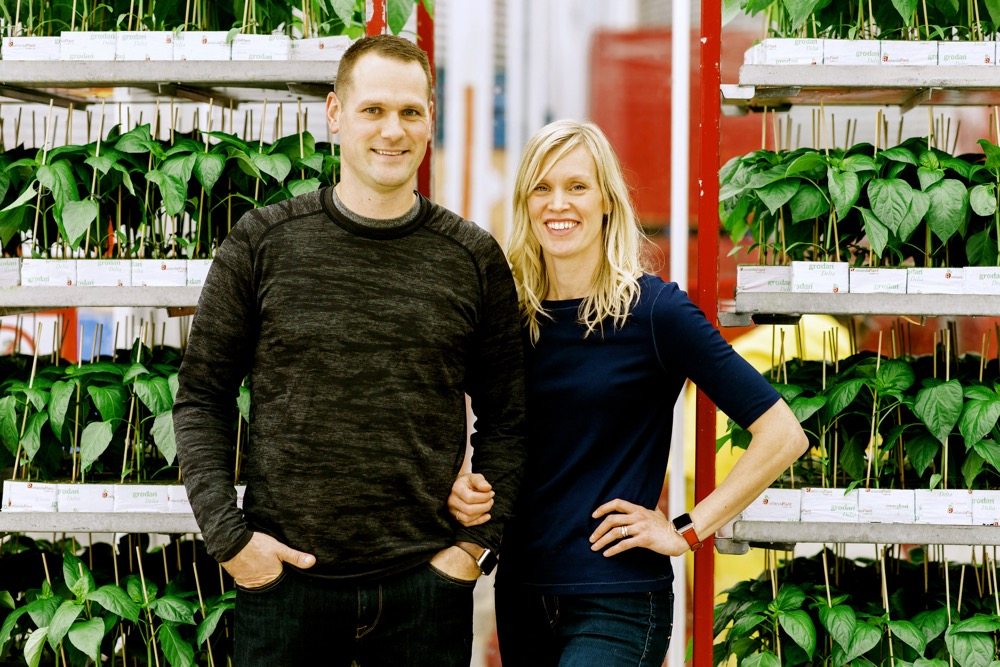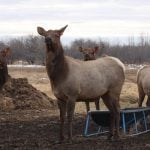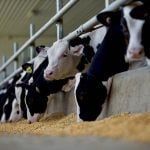The crisis is already here, and farmers are caught in the jaws of two ugly steel traps. Not only is it getting harder and harder for farmers to find the employees they need for their own farms, but the companies that farmers rely on — ranging from seed and chemical companies to equipment makers — are also having trouble meeting their targets because good employees are so hard to find and retain.
Mike Bachner, AgCall Human Resources managing partner and recruiter for Eastern Canada, says it’s alarming, and it’s already happening. Others may speak of a six- to 10-year time frame before the crunch hits. Bachner says it’s here now.
Read Also

A modern pioneer adventure
Farming is a complex business. In March 2020 the Teerling family of Lindsay Lake Farms was set to move their…
Finding workers for these jobs on the farm and in technology is an uphill battle, Bachner says. Simply put, agriculture’s traditional sources can’t meet the demand. “Does that mean importing people who are foreign-trained professionals? Does it mean people from arts or non-agricultural programs in universities? Does it mean people who have absolutely no link to rural life and farming and food production? Yes to all of the above.”
Nor are the places where we look for employees the only change that agriculture needs to make, Bachner says. It also needs to think more accurately about itself as an employer too. In fact, Bachner would like to see a name change from the “agri-food sector” to the “agri-food, fuel, and biotech sector.”
“As the industry gets more diverse and sophisticated beyond the traditional corn, wheat, and soybeans, chickens, cows, and pigs, it’s an evolving and eternally dynamic sector of the economy,” Bachner says. “We invent technology… so there are different forces at play.”
The changes that have marked agriculture’s evolution in the past 15 years are staggering, from turning switchgrass into fibreboard to developing computer programs that let farmers share their management data wirelessly. It all means agriculture needs people not only with education, but also with vision.
Other sectors, such as the automotive industry, have experienced their own industrial revolutions, but agriculture continues to reinvent itself. So, as the agri-food, fuel, and biotech sector goes forward and looks to new horizons, there are certain realities it needs to face now.
New people wanted
History has a lot to do with agriculture’s slow recognition of its employment crisis. In short, agriculture is conservative and, because of that, our business models haven’t evolved at the same pace as our technologies or market opportunities.
Agriculture is also much better at talking within its own circle, rather than reaching out to other sectors or to non-ag colleges and universities, says Bachner, who is based in St. Marys, Ont., and regularly attends job fairs at Guelph or its Ridgetown Campus, among other events. “Talent is needed at all levels of the career ladder, in both business and science streams and, unfortunately, non-aggies just don’t hear from us.”
“Some of us do our best to get to non-ag job fairs, to put up a booth and tell the story,” Bachner says. “If I reach two or three every time I do that, I’m helping, but I’m one person.”
Agriculture also needs to come to grips with its own shifting needs, Bachner says. He refers to an Ontario distributor who deals in robotic milking machines and who needs a mechanic to meet farm demand.
Why is demand growing? There are economic factors, but Bachner says it’s also because today’s young farmers don’t want to work endless hours in the barn the way their parents did. They want to see their children grow, and they want a life.
The same is true of employees, Bachner says, although this generation gap can be a tough one to get past wherever it occurs.
“The expectations and preferences of subsequent generations don’t completely align with the Baby Boomers, who built and still manage the industry,” says Bachner, adding that it’s neither right nor wrong, just reality.
- From the Canadian Cattlemen: Sharpen your human resource skills
“To ensure the ongoing success and effectiveness of our industry, we need both parties to meet somewhere in the middle,” Bachner says. “It doesn’t have to be antagonistic or confrontational. We can change our business models, our processes, and our job descriptions most importantly, to better reflect the expectations and preferences of the current generations. Concurrently, new generations of workers can adjust or moderate their expectations to better reflect the realities of the market and the industry.”
One group that is trying to elicit more interest in the agri-food, fuel, and biotech sector is Ontario Agri-Food Education (OAFE) with its Teacher Ambassador Program.
At the 2013 edition of Canada’s Outdoor Farm Show, groups of students toured the event, garnering a better all-around perspective of the types of employees increasingly in demand within agriculture — including mechanics trained in maintaining robotic milkers.
But OAFE is arriving on the scene after a lot of damage has been allowed to happen. According to Jay Cunningham, agricultural relations manager with Scotiabank in Chatham, Ont., agriculture is already suffering from the lack of attention to detail on the part of agri-business.
“Are we seeing some sort of human resources crunch taking shape? I think it greatly depends on the industry, but if you’re looking at it as an aggregate view, we’re currently there,” says Cunningham. “And it’s like any other problem. If we don’t deal with it, it’s only going to get worse.”
Cunningham sees the decline of rural Ontario and rural Canada as having a significant impact. The recession in 2008 certainly affected the market, making business owners reluctant to spend money on training and development. But Cunningham believes this complacency in the Canadian economy is in the process of being corrected, albeit slowly.
“If you go back to the grassroots level and go back to the farm or to anything that’s going to support primary agriculture directly, I think it’s a different issue,” Cunningham says, adding that it’s a succession issue, not in the sense of the handing down of the farm, but in terms of ensuring there are enough people to do the jobs.
“Agriculture has to work just as hard as any other industry, whether it’s trying to find a pipefitter or a computer technician, to try to get good people into the industry,” Cunningham says. “Yet people are so far removed from primary agriculture, they don’t know what they don’t know about the industry.”
Asked if he also believes in the non-farming perception that “agriculture” automatically defaults to being “a farmer,” Cunningham acknowledges that it’s definitely “out there.”
“And I think that the agricultural education institutions have done an extremely poor job of highlighting what is available in the entire industry,” Cunningham says. “They’re often so focused on research that they lose track of their primary focus and primary job, that being education and providing good, qualified students for the workplace and the industry.”
For Cunningham, there’s a direct cause-and-effect relationship linked to agriculture’s preference for candidates with farming backgrounds.
“I can list a number of employers who only want to hire people that have a rural or farm background, and only because of their work ethic,” says Cunningham. “That has been going on for 30 years, and it’s still prevalent. It’s most prevalent in the ag industry but it’s also prevalent in non-ag-related industry or more peripherally related ag-industry. They generally are more independent in their thinking, and better grounded, too.”
The question is, can agriculture afford to be so choosy?
Few options for help
What about expecting help from another agency or government office or corporate interest to join with a group such as OAFE, to help funnel students into agricultural careers? Cunningham says it should be an easy sell, especially to corporate agriculture — they’re simply filling their own employment pipeline for the future.
“Maybe it should come back to industry, where Scotiabank or Monsanto or Dupont should step up,” says Cunningham. “But they have to spin it so there’s a cost-benefit, and I don’t think that would be that terribly hard to do. But the Band-Aid solutions that businesses have been applying are going to hit the fan, and at that point, we go from efficient to inefficient.”
Adds Cunningham, “We also have a bunch of farm organizations in this province that are singularly focused and self-serving, and this has been a problem for years. No one wants to work together.”
Bachner also sees the rift between urban and rural, but says it’s up to anyone and everyone working in the agri-food, fuel, and biotech sector to step up and do their part.
“We’re in a segment of the economy that feeds the world, and what’s more important than that?” says Bachner. “We all need to take responsibility to tell the good story of what we do and how we do it. We all need to inform and educate, whether it be our youth, our educators, or our politicians. Unfortunately, that audience is increasingly removed from any ag or rural background, but as an industry, we need to get creative and, more importantly, active in an integrated communications strategy.”
















